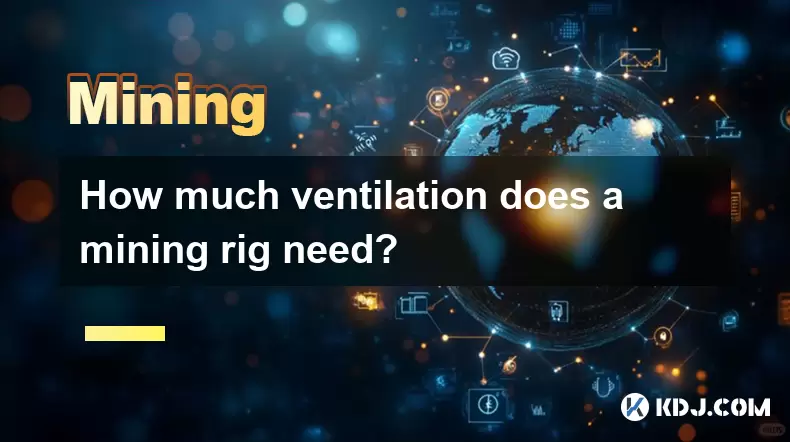-
 Bitcoin
Bitcoin $117,949.0176
0.77% -
 Ethereum
Ethereum $3,143.8503
5.85% -
 XRP
XRP $2.9255
2.03% -
 Tether USDt
Tether USDt $1.0000
-0.01% -
 BNB
BNB $689.0236
1.11% -
 Solana
Solana $163.3524
2.09% -
 USDC
USDC $0.9999
-0.01% -
 Dogecoin
Dogecoin $0.1984
3.58% -
 TRON
TRON $0.3009
0.32% -
 Cardano
Cardano $0.7433
2.52% -
 Hyperliquid
Hyperliquid $47.5538
-0.91% -
 Stellar
Stellar $0.4607
2.37% -
 Sui
Sui $4.0009
3.44% -
 Chainlink
Chainlink $16.0734
4.54% -
 Hedera
Hedera $0.2338
-0.44% -
 Bitcoin Cash
Bitcoin Cash $497.6300
1.10% -
 Avalanche
Avalanche $21.9301
5.61% -
 UNUS SED LEO
UNUS SED LEO $8.8476
-1.77% -
 Shiba Inu
Shiba Inu $0.0...01363
5.22% -
 Toncoin
Toncoin $3.0956
3.08% -
 Litecoin
Litecoin $95.9863
3.76% -
 Polkadot
Polkadot $4.0746
5.35% -
 Monero
Monero $335.3704
-1.17% -
 Uniswap
Uniswap $9.2284
3.49% -
 Dai
Dai $1.0002
0.02% -
 Bitget Token
Bitget Token $4.5845
5.04% -
 Pepe
Pepe $0.0...01270
5.96% -
 Ethena USDe
Ethena USDe $1.0005
-0.01% -
 Aave
Aave $329.3693
5.71% -
 Bittensor
Bittensor $438.6437
4.80%
How much ventilation does a mining rig need?
Proper ventilation is essential for mining rigs to prevent overheating, maintain performance, and extend hardware lifespan.
Jul 14, 2025 at 11:42 pm

Understanding the Role of Ventilation in Mining Rigs
Ventilation is a critical factor in maintaining optimal performance and longevity of a mining rig. Unlike standard computers, mining rigs operate continuously under high computational loads, generating significant amounts of heat. Without proper airflow, this heat can accumulate, leading to thermal throttling, reduced hash rates, and potential hardware damage. The primary goal of ventilation is to ensure that hot air is efficiently expelled while cool air is drawn in to maintain stable operating temperatures.
Inadequate ventilation can lead to overheating, which not only impacts mining efficiency but also shortens the lifespan of components such as GPUs, power supplies, and motherboards. Therefore, understanding how much ventilation your mining rig requires is essential for both performance and durability.
Factors Influencing Ventilation Requirements
Several variables influence how much ventilation a mining rig needs:
- Number of GPUs: More graphics cards mean more heat output. A typical mining rig may house between 6 to 12 GPUs, each capable of producing 150W or more of heat.
- Ambient Temperature: The surrounding environment plays a key role. Higher room temperatures reduce the efficiency of cooling systems.
- Case Design: Open-air cases allow better airflow compared to enclosed setups. Proper placement of intake and exhaust fans is crucial.
- Fan Configuration: Having a balanced setup with dedicated intake and exhaust fans ensures continuous air movement.
- Mining Algorithm: Some algorithms are more GPU-intensive than others, affecting thermal output.
Each of these factors must be evaluated when determining the necessary ventilation for your mining rig.
Calculating Airflow Needs for Your Mining Rig
To calculate how much airflow (measured in cubic feet per minute or CFM) your mining rig needs, consider the following steps:
- Determine Total Heat Output: Add up the thermal design power (TDP) of all components. For example, if you have 6 GPUs rated at 150W each, that’s 900W of heat to dissipate.
- Estimate Required CFM: As a general rule of thumb, you need approximately 2.5 CFM per watt of heat generated. So, for 900W, you’d need around 2250 CFM of total airflow.
- Balance Intake and Exhaust: Ensure that the amount of air being pulled in matches or slightly exceeds the amount being pushed out to avoid pressure imbalances.
Proper calculation helps in selecting the right fans and ensuring sufficient air exchange to keep temperatures within safe limits.
Best Practices for Setting Up Ventilation
Implementing effective ventilation involves more than just installing a few fans. Consider the following practices:
- Use High-Quality Case Fans: Opt for large diameter, low RPM fans for quieter operation and steady airflow.
- Position Intake Fans Strategically: Place them near the bottom of the case where cooler air tends to settle.
- Install Exhaust Fans at the Top: Hot air rises, so placing exhaust fans on top ensures efficient removal of warm air.
- Ensure Cable Management: Cluttered cables obstruct airflow. Use zip ties or Velcro straps to route cables neatly.
- Avoid Overcrowding the Room: Allow space between rigs and walls or other equipment to prevent heat buildup.
- Monitor Temperatures Regularly: Use software like MSI Afterburner or HWInfo to track GPU temperatures and adjust airflow accordingly.
Following these guidelines can significantly improve thermal management and mining efficiency.
Additional Cooling Solutions for Mining Rigs
While ventilation is foundational, additional cooling solutions may be necessary depending on your setup and environment:
- Liquid Cooling Systems: These offer superior thermal performance but come with increased complexity and cost.
- Air Conditioning Units: For indoor mining farms, portable or split AC units help maintain ambient temperature.
- Dehumidifiers: Excess humidity can cause condensation inside electronics, so controlling moisture levels is important.
- Custom Ducting: Directing hot air outside using flexible ducts prevents recirculation into the mining area.
- Immersion Cooling: Although less common, some miners use mineral oil or dielectric fluids to submerge hardware for extreme cooling.
These supplementary measures can complement ventilation and provide better thermal control, especially in high-density mining environments.
Frequently Asked Questions
Q: Can I mine without a case for better ventilation?
A: Yes, many miners use open-air rigs or PCIe riser extensions to mount GPUs outside a traditional case. This allows unrestricted airflow and easier access for maintenance. However, it exposes components to dust and physical damage, so cleanliness and safety precautions become even more important.
Q: How often should I clean my mining rig's fans and filters?
A: It depends on the environment. In dusty areas, cleaning every 2–4 weeks is recommended. Use compressed air or soft brushes to remove dust from fan blades and heatsinks. Clogged fans reduce airflow and increase temperatures.
Q: Is it okay to place multiple mining rigs close together?
A: While space constraints may push miners to cluster rigs, doing so without adequate spacing or room ventilation can trap heat and reduce efficiency. If grouping rigs, ensure they’re placed in a well-ventilated room with separate exhaust systems for each rack or row.
Q: What is the ideal operating temperature for mining GPUs?
A: Most modern mining GPUs perform optimally between 60°C and 75°C. Anything consistently above 80°C can degrade performance and shorten component life. Monitoring tools can help you adjust fan curves and airflow settings accordingly.
Disclaimer:info@kdj.com
The information provided is not trading advice. kdj.com does not assume any responsibility for any investments made based on the information provided in this article. Cryptocurrencies are highly volatile and it is highly recommended that you invest with caution after thorough research!
If you believe that the content used on this website infringes your copyright, please contact us immediately (info@kdj.com) and we will delete it promptly.
- Bitcoin's Bullish Run: Demand Surges, Correction Unlikely?
- 2025-07-16 12:30:12
- MetYa, Conflux Network, and SocialFi: Building the Future of Web3
- 2025-07-16 12:30:12
- Cantor Fitzgerald, Bitcoin, and SPAC Acquisitions: A New York Perspective
- 2025-07-16 10:30:12
- PoL v2 and BeraChain: Building a Stronger Blockchain Ecosystem
- 2025-07-16 10:30:12
- Bitcoin, Social Media, and FOMO: A New Yorker's Take on the Crypto Craze
- 2025-07-16 10:50:12
- GameStop, Bitcoin, and the Inflation Hedge: A New York Perspective
- 2025-07-16 08:30:12
Related knowledge

How are crypto mining profits taxed?
Jul 14,2025 at 12:28am
Understanding Cryptocurrency Mining and TaxationCryptocurrency mining involves validating transactions on a blockchain network and earning rewards in ...

How to keep a mining rig cool
Jul 12,2025 at 01:42pm
Understanding the Importance of Cooling in Mining RigsCryptocurrency mining is an intensive process that places heavy demand on hardware components, p...

How to mine crypto on a gaming PC
Jul 16,2025 at 12:00pm
What is Crypto Mining on a Gaming PC?Crypto mining involves using your computer's processing power to validate transactions on a blockchain network. A...

How to set up a crypto miner
Jul 16,2025 at 09:14am
Understanding Ethereum Gas Fees: What Are They and How Do They Work?Ethereum gas fees are a fundamental aspect of the network, representing the cost r...

Can you mine crypto on a laptop?
Jul 16,2025 at 02:21am
Is It Feasible to Mine Cryptocurrency on a Laptop?Mining cryptocurrency on a laptop is technically possible, but feasibility depends heavily on the ha...

Is crypto mining worth it?
Jul 16,2025 at 01:21am
Understanding the Basics of Crypto MiningCrypto mining refers to the process of validating transactions on a blockchain network by solving complex mat...

How are crypto mining profits taxed?
Jul 14,2025 at 12:28am
Understanding Cryptocurrency Mining and TaxationCryptocurrency mining involves validating transactions on a blockchain network and earning rewards in ...

How to keep a mining rig cool
Jul 12,2025 at 01:42pm
Understanding the Importance of Cooling in Mining RigsCryptocurrency mining is an intensive process that places heavy demand on hardware components, p...

How to mine crypto on a gaming PC
Jul 16,2025 at 12:00pm
What is Crypto Mining on a Gaming PC?Crypto mining involves using your computer's processing power to validate transactions on a blockchain network. A...

How to set up a crypto miner
Jul 16,2025 at 09:14am
Understanding Ethereum Gas Fees: What Are They and How Do They Work?Ethereum gas fees are a fundamental aspect of the network, representing the cost r...

Can you mine crypto on a laptop?
Jul 16,2025 at 02:21am
Is It Feasible to Mine Cryptocurrency on a Laptop?Mining cryptocurrency on a laptop is technically possible, but feasibility depends heavily on the ha...

Is crypto mining worth it?
Jul 16,2025 at 01:21am
Understanding the Basics of Crypto MiningCrypto mining refers to the process of validating transactions on a blockchain network by solving complex mat...
See all articles

























































































